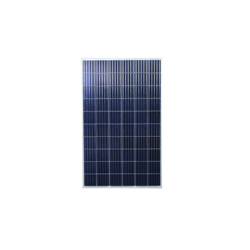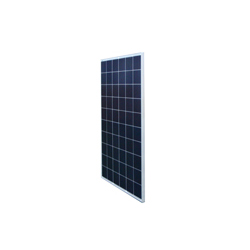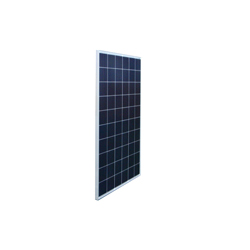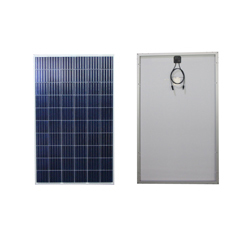Jinpo Solar PV Panel
- Jinpo Solar was established in 1996, it produces Solar Energy Products.
- It is one of the most professional Solar PV Panel Manufacturers and Suppliers.
- Jinpo Solar provides 25 years Solar PV Panel output Warranty.
- Jinpo Solar is the top solar panel manufacturers in China.
- Jinpo is the best PV Panel Manufacturers for solar panel wholesale.
Your Premier
Solar PV Panel Manufacturers and Suppliers
Solar PV Modules
Solar PV modules made from polycrystalline silicon,more about Solar Electric Photovoltaic Products and Systems from Jinpo Solar.
Solar Photovoltaic System
Solar photovoltaic modules generate electricity, it is only one of the many parts in a complete solar photovoltaic(PV)system.
Solar Photovoltaic Panels
Solar Photovoltaic Panel is also called Solar PV Panel,Photovoltaics (PV) changes light into electricity.
Solar panel technology
Two types of solar technology: photovoltaics(PV) and concentrated solar power (CSP). Jinpo Solar PV panel depends on Photovoltaics technology.
- Panel Efficiency (%):15.58%.
- Polycrystalline 6*10 (60cell).
- Panel Efficiency (%):15.89%.
- Polycrystalline 6*10 (60cell)
- Panel Efficiency (%):16.19%.
- Polycrystalline 6*10 (60cell).
- Panel Efficiency (%):16.50%.
- Polycrystalline 6*10 (60cell).
For more than 30 years, Jinpo solar only do one thing, it to produce solar energy products: Solar pv panels. It is one of the most professional suppliers and manufacturers in Shandong ,China. Jingpu has the advanced technology and machinery to make solar pv panels ranks best in quality. Jingpu solar pv panels ranks on top in Chinese solar panel manufacturers. We help many villagers to own their own solar pv panel power plant. and finished more than 80MW solar pv panel plant in Yishui County in 2017. We attend the Solar Power Philippines on May 23-24 in SMX Pasig, Metro Manila, It shows our solar water heating panels, and solar pv panels, and our Solar street lights. We have a wide range applications on the solar pv panel products. Contact us now for quotation.
Send us your requirement, Let's Jinpo support you
Solar PV Panel: The Complete Guide for Importers and Buyers
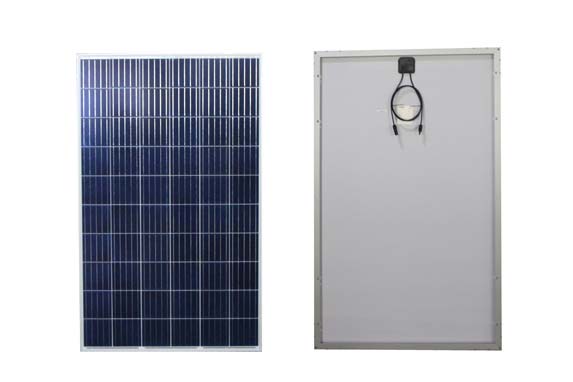
Introduction of Solar PV Panel Guide
Solar cells which are also known as PV cells are capable of converting the energy from sunlight into electricity. The PV acronym stands for photovoltaic and it refers to the process of converting light (photons) into electricity (voltage).
The PV effect was discovered in 1954 by scientists. They discovered that when silicone is exposed to direct sunlight, it will release an electric charge.
When many solar cells are combined, they end up forming a solar PV panel. This system is powerful enough to produce electricity that can be used for the domestic and commercial purpose.
Let’s get started!
- Chapter 1 Introduction of Solar PV Panel
- Chapter 2 Types of Solar PV Panel
- Chapter 3 How to Install Solar Panels Step By Step?
- Chapter 4: Solar PV Panels Vs Other Renewable Sources
- Chapter 5: Cost Analysis of Solar PV Panels
- Chapter 6: Advantages and Disadvantages of Solar PV Panel
- Chapter 7: Solar PV Panel System Maintenance and Troubleshooting
- Chapter 8: How to Choose the Best Solar PV Panel Manufacturers?
- Chapter 9 FAQs on Solar PV Panel
- Chapter 10 Cities Which Install Solar PV Panels
Chapter 1: Introduction of Solar PV Panel
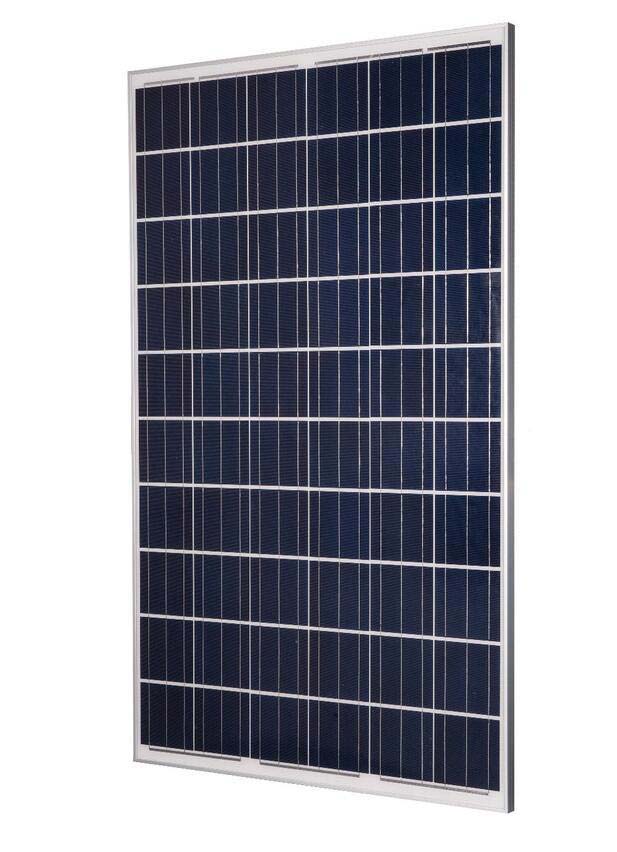
1.1. What is Solar PV Panel?
Solar PV panel is a device that converts light energy into electrical energy. Scientifically, it converts photons to electricity. This energy is readily available and can be used to power electrical loads.
A solar panel consists of a collection of several solar cells which work together for the purpose of generating energy.
The electricity produced by a solar panel is directly proportional to the exposure to the sunlight. If the panel is exposed for many hours, chances are it will produce more electrical energy.
1.2. A Short History of Solar Panels
The history of solar PV panels dates back to the late 1800s. During the ancient days, solar energy was mainly used to heat the steam. This steam was later on use to power different machines.
Edmond Becquerel revolutionized the industry when he discovered the photovoltaic effect. This discovery opened up people’s mind regarding the use of solar energy as a source of electricity.
Later on, Charles Fritts invented the first ever solar cell which was made of selenium. The first solar cell was manufactured at Bell laboratories in 1954.
During the early years after the invention, tiny solar PV panels were embedded on people’s calculators. Today we have sophisticated solar PV panels that are used is a wide range of applications.
1.3. Components of a Solar PV Panel
For a solar PV panel to work smoothly, various components must be brought together to perform their respective roles. Here are the main components of a solar PV panel.
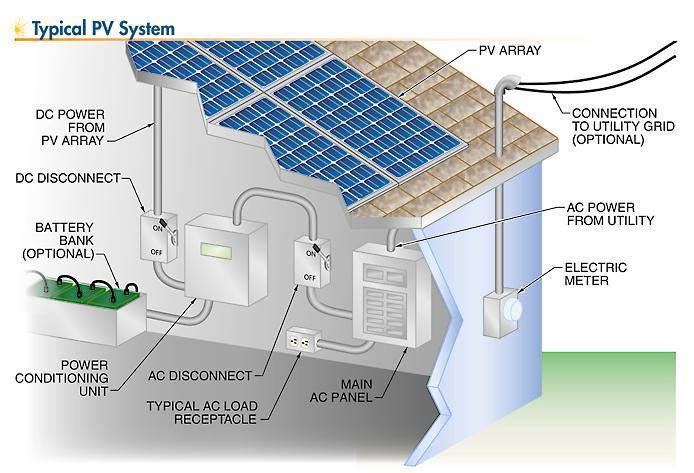
i. Solar Panel or Solar PV Module
A solar panel or PV Module is the primary component of a solar PV panel. It is responsible for generating the electrical energy. There are different types of solar panels and we will discuss them in the later chapters.
Basically, solar panels are made of solar cells, polymer frame, a transparent glass and aluminum frame. The modules vary in size, shape, and wattage. There may also be a variation in the colors.
Also, different solar panels have different voltage ratings. Some panels are rated 24 volts while others have 12olts. You can also get panels with unique voltages such as 60, 42 and 18.
The pricing of the solar PV modules depends on the wattage. The more the wattage, the higher the price.
ii. Solar Inverter
A solar converts the DC current from the solar to AC current. It is imperative to note that most household appliances are powered by the AC current.
There are two main types of inverters that are used on solar PV panels. These are standalone and grid capable inverters.
Standalone or off-grid inverters require batteries for the storage of energy. Grid-tied inverters don’t need batteries. Grid-capable inverters can work with or without batteries.
Even with these classifications, there are still small variations in terms of the types of inverters. They come in different designs to suit the needs of different solar PV panel.
iii. Battery
Batteries are used to store energy in the absence of sun. Batteries for solar PV come in different voltages. Some are rated 12 volts while others are rated 6V.
There are three main types of batteries that can be used for solar energy. These are:
- Flooded Lead Acid (FLA) batteries
- Sealed Gel Cells batteries
- Sealed Absorbed Glass Matt (SAG) batteries
Although the FLA batteries seem to be cost-effective, they require constant maintenance. You need to monitor their voltage and add some water regularly.
Those who don’t want to deal with the maintenance issues buy sealed batteries. They require minimal maintenance. However, they are the most expensive of the three.
iv. Mounting Structures of the Solar Panel
These are basically hardware that supports solar panels in a perfect position. This is because solar panels need to be fixed in a position where they can receive the maximum amount of sunlight.
PV module mounting systems are made of different materials. Most of them are made of aluminum. This is mainly because of the strength and reliability of this material.
Solar panels perform well at cool temperatures. For this reason, choose a mounting system that allows a seamless flow of air.
Stability and wind loading are two factors that you should consider when choosing a mounting system
v. Combiner Box
Although it may not be necessary, you may need it when you want to combine the outputs of different solar panels. It allows different solar panels to be connected in parallel.
vi. Solar Charge Controllers
The role of a solar charge controller is to regulate the amount of current that comes from the panel to the battery. It prevents the overcharging and undercharging of the batteries.
Solar charge controllers also prevent the electric current from leaking out of the battery when there is minimal charging.
Other Components
There are other miscellaneous components that can improve the performance of the solar PV panel and at the same time keep it safe.
Residual Current Circuit Breaker (RCCB) can protect your solar panel and other components from current leaks.
A surge protection device may provide some protection against voltage surge.
The choice of miscellaneous tools may vary with the location. This is because some incidences are likely to happen some places and not in others.
All in all, do not ignore to install any equipment that is capable of keeping your solar panel safe.
1.4. How Does a Solar PV Panel Work?
So what is the photovoltaic working principle? Solar cells are the building block of the solar PV panel. But, how do solar cells work?
A solar PV panel or PV module consists of several solar cells that are wired together to function as a single unit. These cells are made of silicon material.
When the sun rays hit a solar cell, it creates an electric field causing the electrons to flow. The constant movement of these electrons is what we call the electrical energy.
An increase in the intensity of sunlight will result in more electrons. This means that more energy output can be obtained when the sun shines at its optimum level.
The solar PV modules produce energy which exists in the form of DC. An inverter will then convert this energy into AC which is ready to be used by electrical appliances.
Solar panels are usually rated in terms of the amount of electricity that they generate. In most cases, different modules are combined to form a more powerful solar panel. The energy from such systems can be used for domestic and even commercial purposes.
Chapter 2 Types of Solar PV Panel
There are different types of solar PV panels. Before making any purchase, it is important that you know each type and what you stand to gain from it.
It is also vital to know that different types of solar panels are used for different purposes. Also, some panels work well in certain places and not in others. This makes it necessary to have some knowledge about different types of solar panels.
So, which type of PV module is the best and why should you choose it? To help you make a wise decision, we are going to look at each type of solar power module.
2.1. Monocrystalline Solar Panels
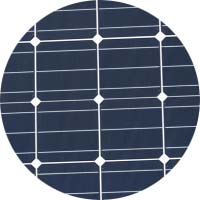
This type of solar PV panel is made of monocrystalline silicon. This is the purest type of silicone that is in the market.
Monocrystalline silicon is characterized by rounded edges and amorphous dark look. Due to the high levels of purity, monocrystalline solar panels tend to have the highest rates of efficiency.
Simply put, these types of solar panels produce a high output of electricity. Their uniform structure makes them occupy minimum space. This means that many solar cells can be fixed on a small frame.
These solar cells are rarely affected by high temperature as compared to other types of solar cells. However, you may have to part with more money in order to enjoy all these benefits.
2.2. Polycrystalline Solar Panels
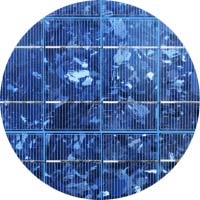
You can identify polycrystalline solar panels by their square divisions. These panels have speckled blue looks and the angle of a single solar cell is not defined.
Polycrystalline solar panels are made of melting raw silicon. This type of semiconductor tends to melt faster. This means that they have a shorter lifespan.
Due to their structure, solar cells in these type of panels occupy more space. They also have a low efficiency. You need lots of these cells in a solar panel.
Polycrystalline solar panels are easily affected by the variation of temperature. As expected, they are much cheaper than monocrystalline solar PV modules.
2.3. Thin Film Solar Cells
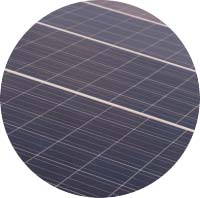
This type of photovoltaic panel belongs to the second generation solar panels. Most panels that belong in this category are mainly found in photovoltaic powers stations and commercial buildings.
A thin film solar panel is obtained by placing one or more films of photovoltaic material into a substrate. Commonly used materials are copper, cadmium, and silicon.
They are quite easy to manufacture and this explains why they are the cheapest option. The7 don’t require plenty of material.
Thin film solar panels are quite versatile and flexible. They can be used for various applications. They are also capable of withstanding high temperatures.
The main problem with thin film solar panels is they require plenty of space. This factor makes them unsuitable for residential applications. They also tend to have shorter warranties.
However, if space is not an issue and you are looking for a cheaper option, it is advisable to get this type of solar panel.
2.3. Hybrid Solar PV Panel
Hybrid solar panels are able to combine the power of photovoltaic and thermoelectricity. They generate electricity to run home appliances while at the same time generate heat for heating water.
The main aim of hybrid systems is to improve the efficiency of solar panels. They are designed to cover up for various challenges such as the effect of rising temperatures on the solar cells.
Some hybrid solar panels have a cooling system beneath them. This mechanism drives away heat from the panel. The expelled heat is then used to heat some water.
The production of hybrid solar panels is still in the developmental phase. More research is being done on the subject.
2.4. Cadmium Telluride Solar Cell
This type of solar panel is powered by the cadmium telluride technology. This technology facilitates the production of solar cells at a relatively low cost. However, these cells have a shorter payback period.
Concerns have been raised about the toxic nature of Cadmium Telluride. Health experts are concerned that the materials used can be poisonous especially when inhaled. These concerns have hampered the rapid production of these solar PV panels.
2.5. Difference Between Monocrystalline and Polycrystalline Solar Panel
Both the monocrystalline and polycrystalline solar panels perform the same function; to generate electricity from solar.
Also, both have the same working mechanism and are made of the same material (silicon).
During your quest of looking for a reliable solar panel system, you are likely to encounter these two types of panels. Before choosing one, you should know some differences.
First, the solar cells in a monocrystalline solar panel are formed into the bars and extend into the warfer. They tend to assume a round shape.
On the other hand, the cells of polycrystalline panels stick together to form warfers. They assume a square shape.
Another difference is in terms of the make. In monocrystalline, a single-crystal silicon was used to make them. Polycrystalline solar panels are made of several fragments of silicon crystals.
Monocrystalline tend to generate electrons with ease. This is because the electrons can move around them even with little exposure to sunlight. This means that they are very efficient.
On the other hand, the movement of electrons in polycrystalline panels is quite limited. They require plenty of energy. Their efficiency is quite wanting.
When it comes to the aesthetics, monocrystalline have a black hue while polycrystalline solar panels have a blueish hue.
2.6. Which Solar Panel is the Best? Monocrystalline, Polycrystalline Or Thin Film?
From the differences and features of solar panels, it will be much easier to choose the best solar panel that will suit your needs.
Monocrystalline PV panels are the most efficient solar PV modules. They also require a minimum area. However, they are the most expensive panels on the market.
Polycrystalline solar PV modules are not as expensive as the monocrystalline. However, their level of efficiency is lower than the latter. They are also cheaper than monocrystalline.
Thin-film solar panels are the cheapest of all solar panels. However, they require plenty of space. You can only install them if there is plenty of space on your roof.
So, which type of solar PV panel is the best? Just asses your needs financial capability and the physical requirements. From there, you will buy a panel that will serve you well.
Chapter 3: How To Install Solar Panel-Step By Step
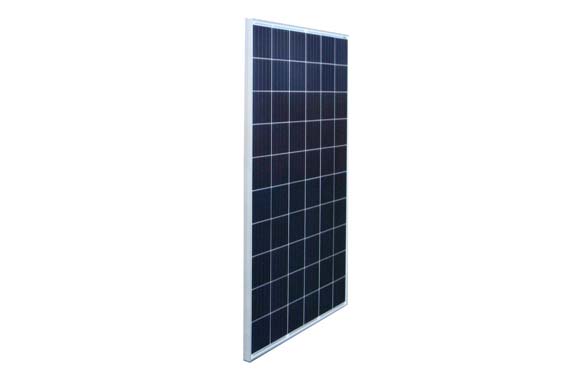
Installing a solar panel is a simple and straightforward process. Here are the steps that you should follow:
Step1: Prepare the Platform Where You Will Mount the Solar Panel
First, you need to decide where you want to mount the solar panel. Is it on the roof or on a flat ground?
In whichever place that you plan to install, ensure that the platform is well-prepared. It should be strong enough to support the weight of the solar PV modules.
The platform should also be properly aligned so that it will hold the solar panel in a perfect position. A good position should allow the panel to receive maximum sunlight.
Step 2: Mount the Solar Panel
Once the platform is ready, you can go ahead and mount the solar panel module on it. Whether it is a 12V, 24V or 30V panel, ensure that it fits perfectly on the platform.
Mount the panel on the angle brackets before fixing it on the platform. These brackets usually come with self-tapping screws. This means that you will have to drill a minute hole at the edge of the panel and the bracket.
After the panel, proceed to install the inverter on the electrical box. From there you can proceed to test the stability of the solar panel module. Fix any problem that seems to make it unstable.
Step 3: Wire the Solar PV Panel
This step involves wiring the solar modules and joining them to the fuse combiner box. Strip these models and wire them in pairs before connecting them to the fuse box.
From the solar panel, connect these stripped wires to the underground output cables. During the wiring, ensure that the red cable is connected to the positive terminals awhile the black wires to the negative terminals.
From the terminal box, connect the wires to the junction box, remember to maintain the respective terminals.
Step 4: Install the Charge Controller
A charge controller should be at least 5 meters from the panel and not more than two meters from the batteries. Shorter cables tend to minimize voltage loss as compared to the longer ones.
Once you have decided the exact position of the charge controller, fix it using some screws.
Step 5: Analyze the Wiring
Before you call it a day, check if the wiring is set up properly. Ensure that you connect the circuit breaker both to the panel and the battery.
The connection should allow energy to flow from the circuit breaker to the charge controller then to the battery. Occasionally, this energy will also be flowing back from the battery then pass through the circuit breaker then to the inverter. The batteries should be connected in series.
The inverter will convert the energy from DC to AC which will be readily available for use.
Step 6: Ground the Solar PV Panel
Drill a grounding rod down into the earth. Some parts of the rod should remain above the ground. Run a copper wire from the fuse box onto this rod.
Step 7: Switch on the Solar Panels
Once you are satisfied with the wiring, you can now connect the solar panel to the charge controller. During all the previous steps, your solar panel should be facing down or covered.
At this stage, you can turn it so that it faces upwards. During the first installation, ensure that the batteries are fully charged.
As much as DIY of solar panel installation may sound easier, it comes with some risks. Do not implement it if you are not sure of your skills or knowledge on this subject.
It is much safer to hire a reliable solar panel installing company to do it for you.
Chapter 4: Solar PV Panels Vs Other Renewable Sources
Are solar PV panels the best energy solutions that you will ever get? How do they compare with other renewable energy?
To get a concrete answer, let’s draw a comparison between solar and other common renewable energy sources such as wind, water, and biomass.
4.1. Solar Panel vs. Wind
Wind is a renewable energy that is freely available. This energy is generated by wind turbines which are positioned at strategic locations.
Although wind energy is renewable, it lacks the versatility of the solar energy. It can only be tapped in some places and not others.
Wind turbines can only be installed in areas that are far from distractions. Such areas tend to have low population density.
On the other hand, solar PV panels can be installed anywhere. Wind energy is also affected by the changing wind patterns. This makes it quite unreliable.
4.2. Solar Vs. Hydroelectricity
Hydroelectricity is the energy that is generated by water. It is generated when fast-moving water from dam turns turbines.
Hydropower is capital-intensive. Lots of money is required to construct a dam. Maintaining the hydro energy source is also an expensive affair. Solar panels require minimal maintenance.
The process of constructing a dam interferes with nature. Some aquatic animals can get affected by the development. On the other hand, solar panels have minimal impact on the environment.
4.3. Solar PV Panel Vs. Solar Thermal
Solar thermal energy is usually used for heating applications. In this technology, the panels act as heat collectors.
They collect heat which heats up the liquid that is in the tubes. The fluid is then transported to the cylinder ready for use.
Solar thermal requires less space than a solar PV panel. It is also more efficient in terms of collecting sun than the solar PV.
The technology behind solar thermal is simple and does not require complex components.
However, solar thermal is easily affected by a drop in temperature. This is because it relies more on heat instead of sunlight.
Solar thermals have limited application. Their panels have a shorter lifespan than the ones for solar PV.
Chapter 5: Cost Analysis of Solar PV Panels
What is the price of the solar PV panels? The prices of solar panels have been going down in the recent years. They are more affordable than before.
The photovoltaic panels are priced depending on the number of kilowatts. Panels that can produce more kilowatts have higher price tags than others.
Apart from the panels, there are other things that you need to consider to come up with the total cost. We also need to include the total cost of acquiring different solar components.
These components include cables, inverters, charge controllers, and a mounting platform. If you are installing an off-grid solar panel, you will have to buy batteries.
Your location can also have an impact on the cost of the solar PV panel. Some countries offer incentives and tax benefits on solar panels. Such fringe benefits tend to lower the overall cost of the photovoltaic panels.
5.1. Monocrystalline Solar Panel Price
What is the cost of the monocrystalline solar panels? From our analysis, we concluded that mono-solar panel is the most expensive.
As expected, the prices vary with the size of the module and the manufacturer.
5.2. Polycrystalline Solar Panel Price
As stated earlier, polycrystalline solar PV panels are somehow cheaper than their counterparts mono. They are usually priced at $0.62 per Watt.
Chapter 6: Advantages and Disadvantages of Solar PV Panel
6.1. Advantages
Here are the main advantages of photovoltaic PV panels:
- Solar energy is renewable-Solar energy is always available. Its supply will never be diminished or get depleted. This means that it will serve you for as many years as you want.
- Solar PV panels supply clean energy- In other words, solar is a green energy. It does not pollute the environment during the process of electricity generation.
- Free-You doesn’t need to import solar energy from somewhere. It is available freely.
- Minimal maintenance cost-Solar PV panels are cheap to maintain. This is because they don’t have moving parts. Most components of a solar panel are designed to serve their purpose for years.
- Flexible and Versatile- Photovoltaic panels can be customized to suit your energy demands. In addition to that, they can be used to run a wide range of electrical appliances.
6.2. Disadvantages of Solar PV Modules
Despite the numerous advantages, here are some disadvantages of solar PV panels.
- Expensive to Install- The initial cost of buying and installing solar panels is quite high. The good news is that with the advancement of technology, the cost of PV panels is coming down.
- Variable Energy-The amount of energy produced by solar can vary depending on the intensity of the sunlight. During the cloudy days, the solar panel may not be able to meet your energy demands.
- Toxic Elements: Despite being rated as clean energy, solar panels also produce some toxic materials. During the process of energy generation, the panels release cadmium and arsenic. These two chemicals are highly toxic.
However, the production of these chemicals can be controlled.
Chapter 7: Solar PV Panel Maintenance and Troubleshooting
Are you having some trouble with your solar PV pane? Has it stopped working or is it under performing? Over time, the performance of a solar panel can start going down.
If you notice any abnormalities on your solar panel, you should troubleshoot it until it goes back to normal. Regular maintenance can help to keep the panel in a perfect condition.
7.1. Solar Panels Maintenance Practices
- Clean the panel: You can clean the surface of the solar panel using water. However, avoid using metal brush and detergents While cleaning, avoid pouring cold water on a hot solar panel
- Inspection: Carry out a regular inspection of the panel and other components to detect any problem with it.
- Check the inverter regularly to be sure about its condition
- Check if the frames supporting the panel are stable
- Ensure that the cables on the panel are in good condition.
7.2. Battery Maintainance
Proper maintenance of the batteries helps to extend their life. Here are some of the maintenance practices:
- Check for the leaks and ensure that the terminals are dry
- Clean the batteries at least once a month
- Check the electrolyte and acid levels at least monthly
7.3. Solar Panel Charge Controller Maintenance
- Inspect the controllers regularly
- Tighten any loose terminals and connections
- Get rid of the excess dust from the terminal
7.4 Solar Panel Inverter Maintenance
- Check the inverter for physical signs of damage
- Get rid of any free space around the inverter
- Clean the inverter regularly
Chapter 8: How To Choose The Best Solar PV Pane Manufacturer
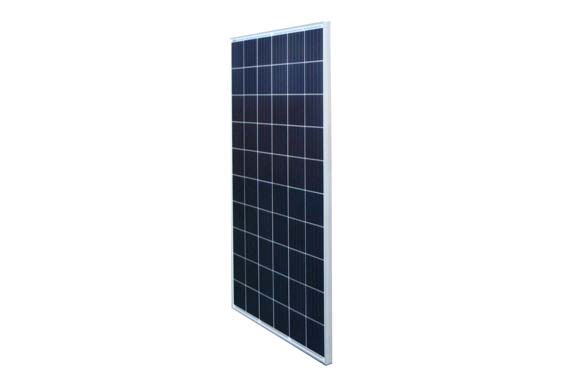
Here are the things to consider when choosing the best solar PV manufacturer:
- Compile a list of all the manufacturers: List down all the manufacturers in the local area. The list should include both big and small companies.
- Analyze each company: From your list, start analyzing the merits and demerits of each manufacturer. Get rid of the ones that seem to be too far from what you are looking for.
- Check the credentials: Check if the selected companies meet certain credentials of a solar manufacturing company. Do they have relevant licenses? Are they certified by energy bodies?
- Read online reviews: browse the internet and try to see what other people are saying about a particular manufacturer. Choose the one that has many positive reviews.
- Request quotes: Ask for quotes from different manufacturers then compare them. Choose the company whose quotes you are comfortable with
Chapter 9: Solar Panel PV Frequently Asked Questions(FAQs)
-
How Do Solar PV Panels Work?
Solar panels consist of several solar cells. These cells convert the light energy from the sun to electricity. This DC electricity is then converted into AC by an inverter before it is channeled into the house. -
What is the Best Size of the Solar Panel?
There is no perfect size. The size of the solar panel is determined by various factors including the demand for energy and space available. -
How Long Do Solar panels Last?
Most solar PV panels are expected to last for a period of 20-25 years. There are some that can go up to 40 years before there are written off. -
Are Solar Panels Expensive to Maintain?
Under normal circumstance, solar panels are very cheap to maintain. You simply need to do some cleaning and minor maintenance of the panel. Ensure that the debris does not pile on the panel -
Between Roof Mounted and Ground Mounted, Which One is The Best?
When it comes to the cost, roof mounted are the best. You don’t need to install structures to support the panel. If there is little space on your roof, then choose ground-mounted solar PV panel.
The main advantage of the ground-mounted panel is you can adjust it depending on the position of the sun. Doing so on top of a roof is quite demanding. -
What Is The Cost of Solar Panels
The price of solar panels varies depending on the type and size of the panel. Otherwise, the average price of a 3kW solar panel is between $4000 and $6000. -
Which Are The Best Solar Panels?
Of all the types of solar PV panels, Monocrystalline solar panels are rated the best. They have higher efficiency levels than the Polycrystalline PV panels which are the second best panels.
Thin-film solar panels are the least efficient. -
Can I Use Solar Panels for My Business?
Solar PV panels can be installed in commercial buildings to be the source of electricity. They can also be used to power outdoor installations such as street lights. Photovoltaic panels can also be used to run machinery in factories. -
Is My Building Ideal for Solar PV Panel?
A solar panel should be able to receive direct rays from the sunlight. The building should be away from anything that can block the sunlight.If you plan to mount the PV panel on the roof, ensure that there is adequate space for the panel
-
Can I Save With Solar
Solar PV panels can reduce your energy bills by more than a half. This is possible because the cost of generating it is not as high as other energy sources.
Chapter 10: Cities that Have Embraced Solar PV Panels
- Solar PV Panel in New Delhi
- Solar PV panel in Kuala Lumpur
- Solar PV panel in Bangkok
- Solar PV panel in Ho Chi Minh
- Solar PV panel in Jakarta
- Solar PV panel in Yangon
- Solar PV panel in Hanoi
- Solar PV panel in Singapore
- Solar PV panel in Phnom Penh
Conclusion
There is no doubt that solar PV panel is the most popular renewable energy. Many people are embracing it for both domestic and commercial use.
Even governments across the globe are putting measures to encourage the use of this energy.
In addition to being economically viable, photovoltaic modules are also reliable. They can serve you for ages without breaking down.
References
- https://www.greenmatch.co.uk/blog/2018/04/best-solar-websites-2018
- https://aseanup.com/infographic-top-cities-urbanization-asean/
- https://www.energysage.com/solar/solar-faq/
- https://www.irena.org/documentdownloads/publications/re_technologies_cost_analysis-solar_pv.pdf
- https://www.solarpowerauthority.com/choose-solar-company-step-step-guide/
- https://www.sunrun.com/solar-lease/cost-of-solar
- https://www.solar-estimate.org/


